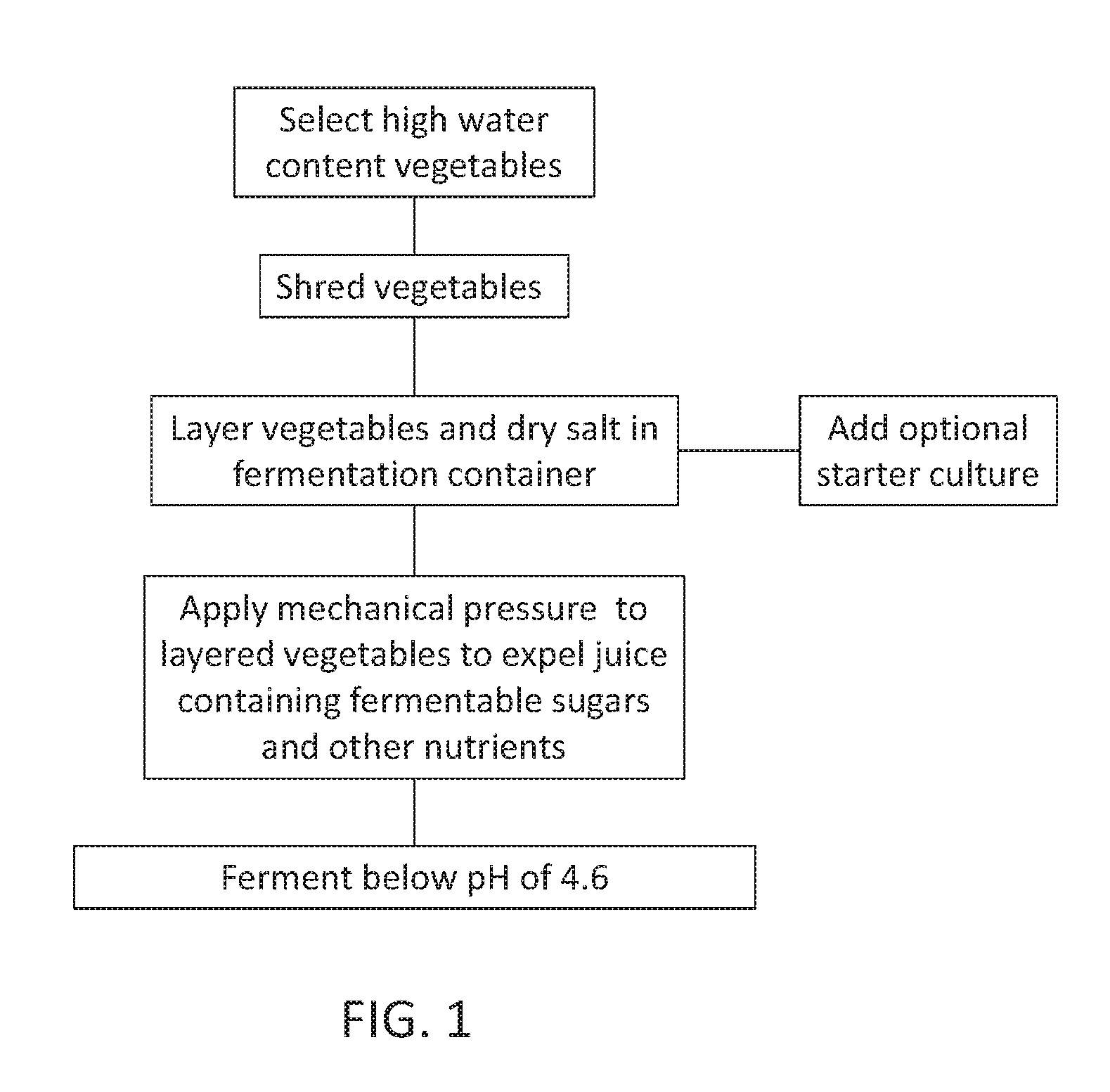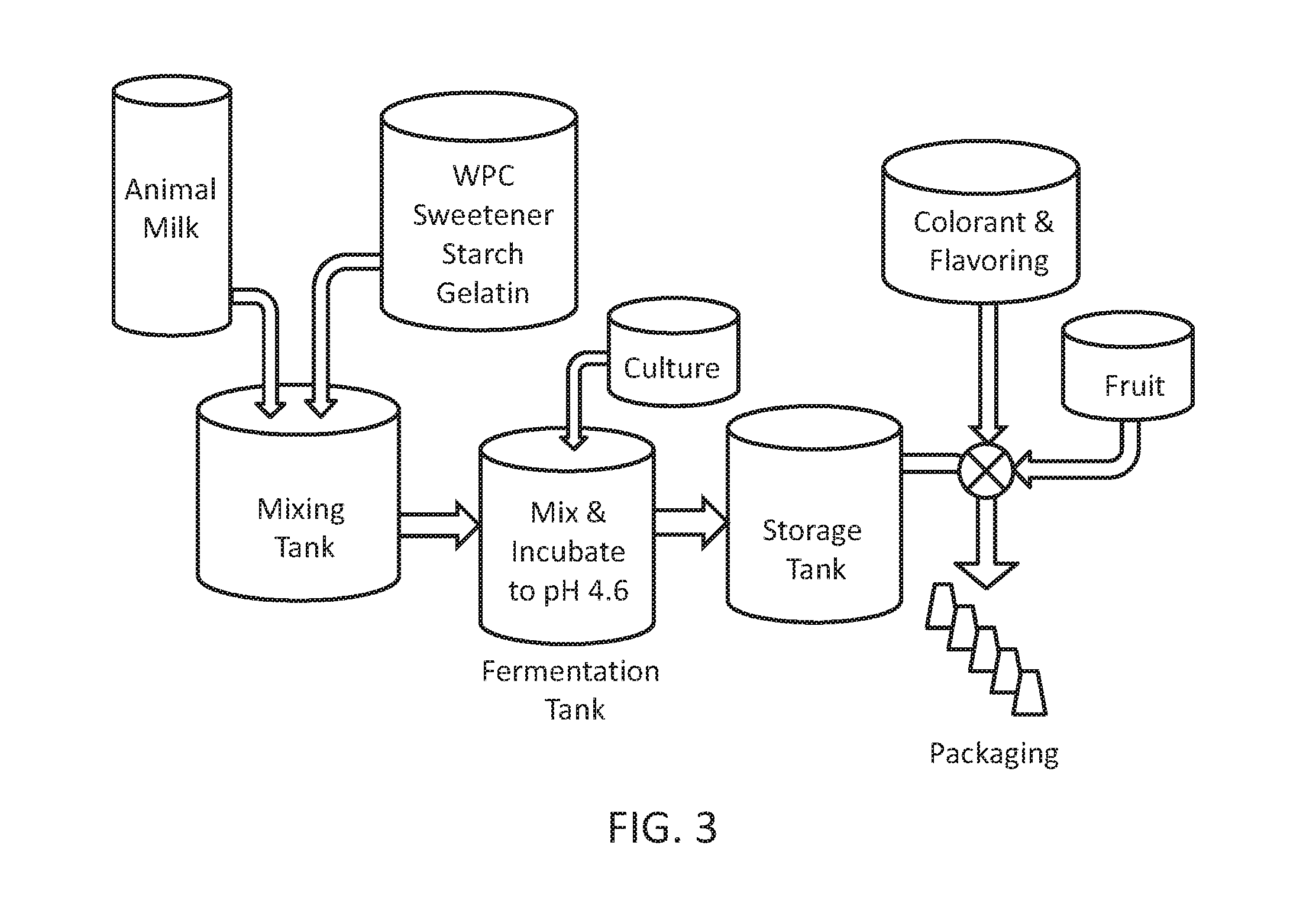Formulation and process for making fermented probiotic food and beverage products
- Summary
- Abstract
- Description
- Claims
- Application Information
AI Technical Summary
Benefits of technology
Problems solved by technology
Method used
Image
Examples
Embodiment Construction
[0071]In brief: The method in accordance with the process of the present invention provides several advantages over previous practices in this field. Unlike the present invention, lactic acid fermentations of plant substrates currently use one of three methods: dry salted, brined, and non-salted. Salting, whether in the form of dry salt or brine, can provide a suitable environment for lactic acid bacteria to grow, but results in a fermented product exhibiting high sodium content. Only a few types of vegetables can be fermented by tactic acid bacteria in an anaerobic atmosphere without the prior addition of salt or brine, rely on uncertain colonization, and produce relatively low-volume batches. Seed grains fermented without salt or brine for animal feed stocks may spoil in low temperature environments typical of farms.
[0072]Fermentation of plant substrates without the use of salt becomes increasingly difficult as batch size increases, and may fail because of insufficient colonizatio...
PUM
 Login to View More
Login to View More Abstract
Description
Claims
Application Information
 Login to View More
Login to View More - R&D
- Intellectual Property
- Life Sciences
- Materials
- Tech Scout
- Unparalleled Data Quality
- Higher Quality Content
- 60% Fewer Hallucinations
Browse by: Latest US Patents, China's latest patents, Technical Efficacy Thesaurus, Application Domain, Technology Topic, Popular Technical Reports.
© 2025 PatSnap. All rights reserved.Legal|Privacy policy|Modern Slavery Act Transparency Statement|Sitemap|About US| Contact US: help@patsnap.com



